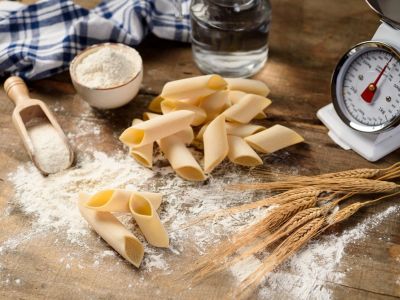What Is Durum Wheat?
Grains used in our foods are simply grasses. As such, even a home gardener can grow these bases for our favorite meals. Semolina pasta comes from Durum wheat. Making semolina flour starts with harvest, separating the seeds from the chaff, and milling. The whole process isn’t difficult but does require some commitment.
Difference Between Semolina and Durum Flour
Durum is a variety of wheat high in gluten. It is milled into a flour that’s used in pasta and baked goods. Semolina pasta is made from Durum wheat, and so is Durum flour. And yet the two are very different. Semolina is milled from the endosperm of Durum wheat. The result is a coarse, yellow product. Durum flour is the left over powder from milling semolina. It is further ground, with a texture that is much finer than Semolina. Both are traditionally used in fine pastas. Durum wheat Semolina is commonly made into hard pastas like macaroni, and helps the pasta keep its shape. Noodles that cook up softer, such as spaghetti, are often made of Durum flour.
How to Grow Durum Wheat Semolina
Triticum durum is a semi-arid grain crop. Prepare a planting bed in a neutral soil by tilling and removing weeds and other impediments. Sow this variety of wheat in spring, either by hand broadcasting or plant in rows. Cover the seed lightly with soil and water. Keep the soil moist until the sprouts appear. Thereafter give the soil around 1 inch (2.54 cm.) of water weekly. Keep weed pests out of your plot, but otherwise sit back and watch it grow. Durum is a very self sufficient plant that doesn’t need a lot of attention. The worst problem is several varieties of fungus which can be mainly avoided by watering in the morning so plants have time to dry, or watering at the roots.
How to Make Semolina Flour
Once the seed heads have turned golden brown, it is time to harvest. Use a scythe or pruners to cut the seed heads from the stems. You may choose to till the stems in or pull them and add them to the compost pile. Shake the seed heads vigorously over a sheet or other cover. Ripe seeds will fall off easily. To remove any chaff, set the seeds near a fan and let the chaff blow away. Alternately, you can move the seed from bucket to bucket on a windy day. To grind your seed, a food mill is optimal. A mortar and pestle is possible, but Durum wheat seed is very hard and the task will be tedious. After you have milled your flour, add water and perhaps an egg, and make a well deserved homemade pasta dinner.
